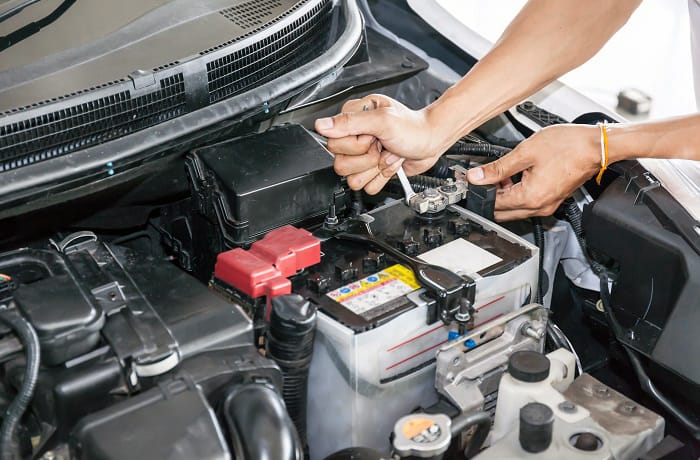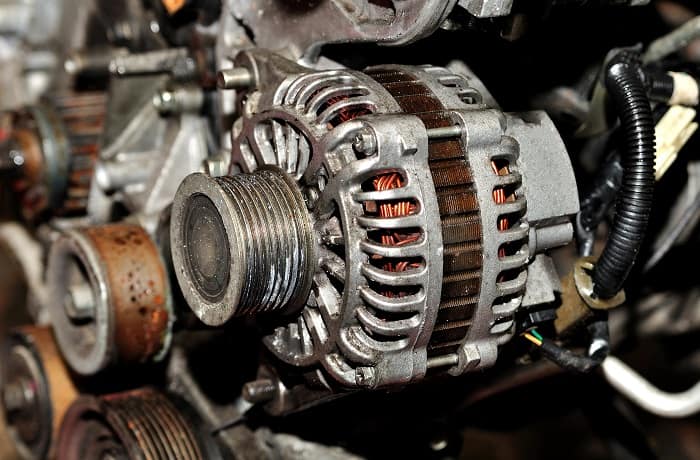Many things can go wrong when your car has a bad battery. You may have trouble switching on the engine in the morning and some electrical functions may not work. However, can a bad battery activate limp mode?
For those who may not be familiar with what limp mode is, this is a security feature that is activated when there is an issue with the engine or transmission control unit.
Limp mode temporarily stops some functions of a car such as the AC or wipers. The reason why this security feature exists is to prevent further damage to other components of the car.
One of the ways a bad battery can activate limp mode is when the power that runs the car’s computer is cut.
As a result, the computing system starts to malfunction thus sending wrong signals to the engine which activates limp mode.
Replacing the battery and resetting the car’s computer can deactivate limp mode and return your car to normal functioning.

Table of Contents
Can a Bad Alternator Activate Limp Mode?
Other than the battery, there is another thing that is known to activate the limp mode and that is a faulty alternator.
When an alternator isn’t supplying enough power, the limp mode is activated to prevent short-circuiting of the vehicle’s electrical functions.
As much as the battery can activate the limp mode, it is also worth checking whether the alternator is functioning properly.
The same approach you would follow with a bad battery is the same thing you should do with a faulty alternator. A replacement will ensure your car stops behaving weirdly because of the limp mode.

Why Does a Bad Battery Activate Limp Mode?
The computers in cars are very sensitive to changes in voltage. This is because nearly all functions of a vehicle rely on electricity.
Even though the limp mode is designed to be activated when the engine and transmission aren’t working correctly. It will also be activated if the current coming from your battery is unstable.
An unstable current can cause a wide range of problems and this is the sole purpose why limp mode exists. To prevent these issues, this feature is activated and ensures the unstable current doesn’t damage the various parts of your car.
Cars that have bad batteries run off the alternator. And this is what causes the current to become unstable thus signaling the limp mode feature.
Other than worrying about the effects of limp mode, it’s very wrong for you to drive around with a bad battery. It is very easy for a bad battery to leave you stranded. And let’s not even get started with the unnecessary inconvenience of jump-starting the car now and then.
Will a Leaking Battery Acid Activate Limp Mode?
Though not a common occurrence, if you have a leaking battery, the acid can eat up the wires thus interrupting the transmission of data from car parts to the computer.
This interference may be misinterpreted by the computer as a transmission issue thus kicking your car into limp mode.
Therefore, if your battery and alternators are working just fine and your vehicle is showing signs of limp mode. Check and confirm whether the battery is leaking acid.
What are the Other Causes of Limp Mode?
Now that we have seen a dead battery can cause a car to activate the limp mode feature, you must know this isn’t the only cause. The limp mode feature can be activated by a wide range of things.
Before we look at what are the causes of limp mode, allow us to describe a little bit about what this feature entails and does. Limp mode is a self-preservation mechanism that is added to most modern vehicles.
Its role is to protect the engine and transmission from significant failure. As it reduces performance, the vehicle prevents further damage to the components in your car.
Ideally, the main goal of the limp mode is to ensure your vehicle ‘limps’ to the nearest repair shop or home.
With that in mind, it’s now time that we look at the other causes of limp mode;
• Failing Transmission
Even though a bad battery can cause a car to activate the limp mode, a failing transmission is a leading cause. The car’s transmission is an essential part of the car.
And if it begins malfunctioning, limp mode ensures that it doesn’t extend the damage to other parts of the vehicle.
• Broken Wires
The second cause of limp mode is damaged wires. The limp mode feature is activated by the car’s computer.
When the wires sending signals to the computer are damaged or broken, then there is a good chance that the computer won’t receive the right information. This may activate the limp mode feature.
• A Malfunctioning Sensor
The sensors also play the same role as wires, they send signals to the computer. If one of the sensors located in the engine or transmission becomes faulty, there is a good chance that the limp mode feature will be activated.
• Engine Boost Issues
For cars that have a turbo, when they experience a boost leak, there is a huge chance that limp mode can be activated. Ensure that you check the status of the engine boost if your car seems to be in limp mode.
• Engine Problems
If your rings or pistons stop functioning, there is a huge chance that limp mode will be activated. To avoid such issues, perform regular engine maintenance.
What are the Signs of Limp Mode?
Not very many people are aware of the signs of a car that has activated its limp mode feature. These signs can be easily mistaken for other common car problems.
To ensure you don’t misdiagnose a car that has activated its limp mode feature, here are the warning signs;
• The check engine light may turn on
• Your engine may overheat
• You will realize a very slow response when you press the gas pedal
• The RPMs can be limited to 3000
• The vehicle will be limited to a speed of not more than 40 MPH
• And the car will generally have reduced power
• Certain electrical functions such as wipers or AC may stop working
If you notice the above signs, do not ignore them. Try and find the nearest auto repair shop, or if you are closer to home, drive and park your car there.
The limp mode can be diagnosed using an OBD scanner. If you don’t have one, your mechanic should.
How Do I Fix Limp Mode?
The best solution to deactivate limp mode in cars is by fixing the underlying cause. If the engine, transmission, or battery, in this case, is to blame, identifying the cause and fixing it right away should get the car up and running.
If you are looking for a quick fix for limp mode, you can try the above options;
• Switch the car off and turn it back on
This is the quickest fix to most car problems. When you realize that your car is in limp mode, switch it off for about five minutes. This duration is to let the components cool down. Then switch it back on.
The car computer should be able to reset during this duration and deactivate limp mode. Switching the car on and then off may not be easy if you have a bad battery or alternator. Therefore, use a jumper if available.
• Look if all the wires going to the transmission are in great shape
Damaged wiring is listed as one of the main causes of limp mode. Assess the condition of the wires and if one or two are damaged, replace them right away. Wiring issues aren’t always the easiest to fix, you may need the help of a mechanic.
• Identify the cause and reset limp mode
If all the above fails, then you just have to identify what’s causing your car to activate the limp mode. As mentioned earlier, an OBD scanner should be able to diagnose the issue at hand.
In instances where the battery is the cause, replacing it should fix the problem ASAP.
Resetting limp mode shouldn’t be difficult if you have an OBD scanner. You will need to switch the car off, allow it to cool down, and then connect your scanner.
Initiate the scan and it will give you the problematic codes. With the help of the internet, you can find out what these codes stand for and then clear them. Doing this should reset limp mode and the vehicle should run as it should.
The Fine Line between a Bad Battery and Limp Mode
A bad battery and limp mode are two varying issues that require different approaches. You need to know how to distinguish between these two.
Although a bad battery can cause the activation of limp mode, at times a bad battery by itself can cause several issues with your car.
A car with a bad battery will have a slow crank, but a car in limp mode will start just fine. The only similarity is that a couple of electrical components may start malfunctioning.
However, these are two different conditions and you should be able to distinguish one from another. If you aren’t familiar with such, a mechanic can be of great help.
